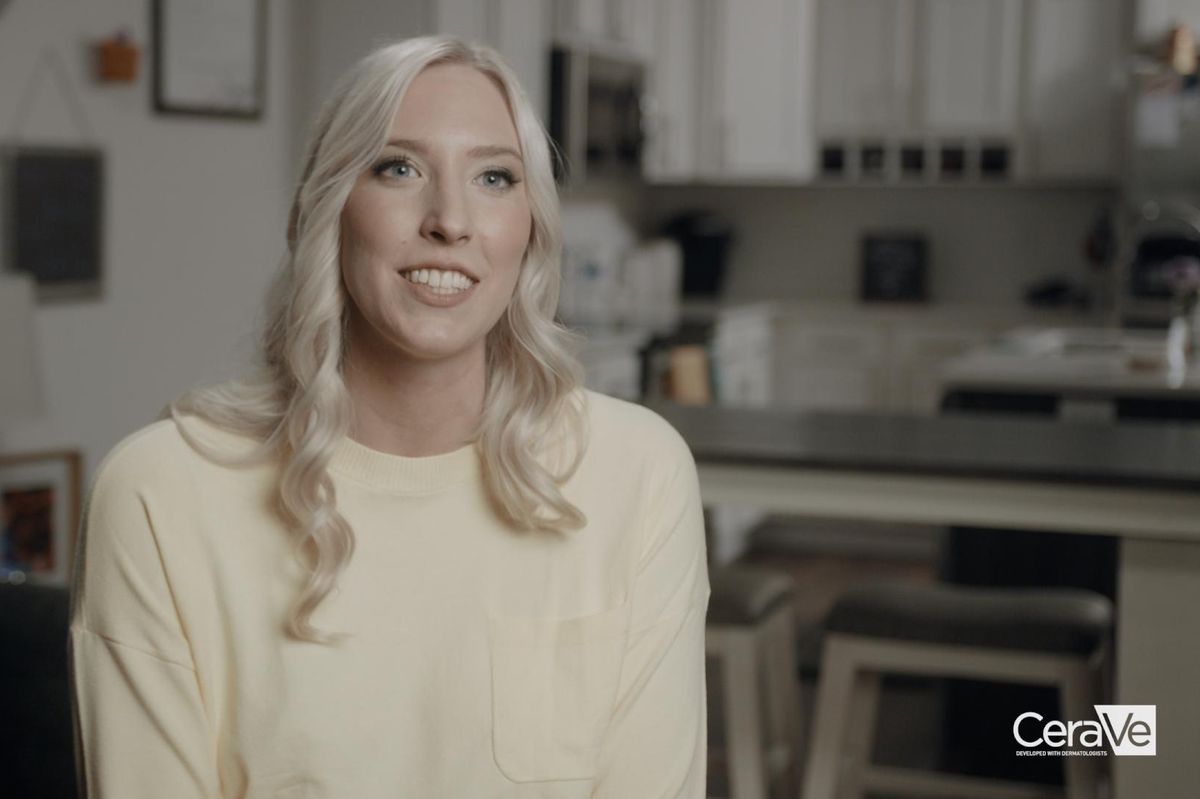Through a historic storm and a global pandemic, this nurse embraces the true meaning of “Iowa nice”

From the time she was a little girl, Abby Recker loved helping people. Her parents kept her stocked up with first-aid supplies so she could spend hours playing with her dolls, making up stories of ballet injuries and carefully wrapping “broken” arms and legs.
Recker fondly describes her hometown of Cedar Rapids, Iowa, as a simple place where people are kind to one another. There’s even a term for it—“Iowa nice”—describing an overall sense of agreeableness and emotional trust shown by people who are otherwise strangers.
Abby | Heroes Behind the Masks presented by CeraVewww.youtube.com
Driven by passion and the encouragement of her parents, Recker attended nursing school, graduating just one year before the unthinkable happened: a global pandemic. One year into her career as an emergency and labor and delivery nurse, everything she thought she knew about the medical field got turned upside down. That period of time was tough on everyone, and Nurse Recker was no exception.
“You had patients that were here one minute and gone the next and the emotional impact took a toll, but we stuck together,” said Nurse Recker. She and her unit eventually found their footing and learned how to work as a team to adapt to the overwhelming influx of COVID-19 patients. Right as they got into a groove, on August 10, 2020, with nearly no time to prepare, a historic “derecho” storm hit the city of Cedar Rapids, Iowa.

A derecho packs fast-moving gusts, but instead of spiraling like a tornado or hurricane, the winds of a derecho move in straight lines. The National Oceanic and Atmospheric Administration reported the storm caused $7.5 billion in damage across South Dakota and Ohio, ranking it as the costliest thunderstorm in U.S. history. Every single Cedar Rapids resident was impacted.
“During the spring we tend to have lots of storms, so we’re used to tornados and other types of bad weather, but nothing like a derecho. I don’t think anyone in Iowa had even heard of a derecho until that August day,” said Nurse Recker. “After the storm hit, we were all trying to figure out what had happened; we didn’t even know there was a name for a storm like that!”
Suddenly, the hospital was filled with people experiencing storm-related injuries. The emergency room was packed, as people who depend on electricity to run their oxygen tanks or dialysis machines were pouring in with nowhere else to go. Just as they had done when the pandemic hit several months before, Nurse Recker and her team pulled together, working back-to-back 12-hour shifts and running on adrenaline.
It occurred to Nurse Recker in the middle of this chaos that she might not have a home to go back to. Instead of panicking, she focused on the people in front of her, putting their immediate needs above her own. It wasn’t until she got into her car to leave the hospital that she took the time to absorb the devastation. A tree had fallen, narrowly missing her car, and was wedged under her front bumper. To this day, she still doesn’t understand how her vehicle wasn’t completely crushed.
This ability to persevere under extreme pressure is what makes nurses so amazing at what they do. CeraVe’s ongoing commitment to the nursing community seeks to recognize inspiring healthcare workers such as Nurse Recker through Heroes Behind the Masks Chapter 2: A Walk In Our Shoes, a campaign featuring inspiring nurses from across the nation.
“Nurses share in some of the most joyful moments of a patient’s life but are also witness to some of the toughest moments, which can be a taxing part of their jobs that often goes unrecognized,” said Jaclyn Marrone, vice president of marketing for CeraVe. “To express our sincerest gratitude, we’re honored—to provide a platform for these incredible stories to be told, inspiring both the nursing community and beyond.”
Nurse Recker says that while sometimes there are situations where there isn’t a good solution and there’s no way to predict the future, she feels good knowing that there are people who have her back.
“I am fortunate enough to work at a job I love and am passionate about. When you love what you do and get to see the positive impact you have on people, it’s hard to be negative. Looking at what I get to do for people each and every day and how I get to impact their lives in a positive way makes it all worth it,” said Nurse Recker. “We know when people are coming to the hospital they are not at their best but the most important thing we can do is just be kind. A smile and thank you go a long way.”
Follow along in the coming days for more uplifting stories brought to you by CeraVe.

